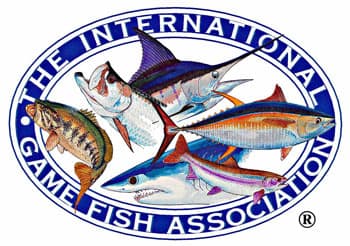First Tag Pops up in IGFA Great Marlin Race
OutdoorHub 11.30.11

Four hundred and nineteen nautical miles later, the fifth fish tagged during the inaugural IGFA Great Marlin Race (IGMR) has become the first fish to have a tag pop off. IGMR marlin number five, caught by angler Norman Pichardo during the San Juan International Billfish Tournament, had its tag pop up just off the coast of Venezuela, near the Las Aves archipelago. Although this is the first tag to pop up during the IGMR, the marlin has already taught anglers more than just where the fish went.
“The marlin came up tailwrapped and really brown – it had been dragged backwards towards the boat and was in pretty bad shape. When the captain first saw it from the bridge he called it a dead fish,” recalls IGFA Conservation Director Jason Schratwieser, who was aboard the Amirita with Pichardo.
But instead of giving up, Schratwieser and the mate David Hernandez quickly got to work reviving the fish. Marlin are ram ventilators, which means that they rely on forward motion through the water to breath. Observations from top captains and crews also suggest that keeping the fish in an upright position by holding the dorsal fin, creates a much better chance for revival. With Hernandez holding the bill and Schratwieser working to keep the dorsal fin of the 250+ lb fish upright, they were able to revive, tag, and release Pichardo’s catch. The obvious question was, would it live?
“Blue marlin are actually quite hardy fish if the necessary time is taken to revive them,” Schratwieser shared. “The data from this tag conclusively demonstrate that it is absolutely possible to bring back a tailwrapped or moribund billfish if you take the time to do it properly. And that’s what the IGMR is all about – increasing our knowledge of these amazing fish.”
With the release of the tag, scientists at Stanford University are able to reconstruct the marlin’s route and its position in the water column, along with the temperature. Not only will learning more help anglers targeting billfish, better data will also provide valuable information to the resource managers and policy makers responsible for ensuring their long term conservation.
A map of tagging sites and pop-up locations is now available at http://igmr.igfa.org, along with more information about the IGMR and the science behind it. The next tournaments in the Race will be announced in the 2012 IGFA World Record Game Fishes book, published in early January.

